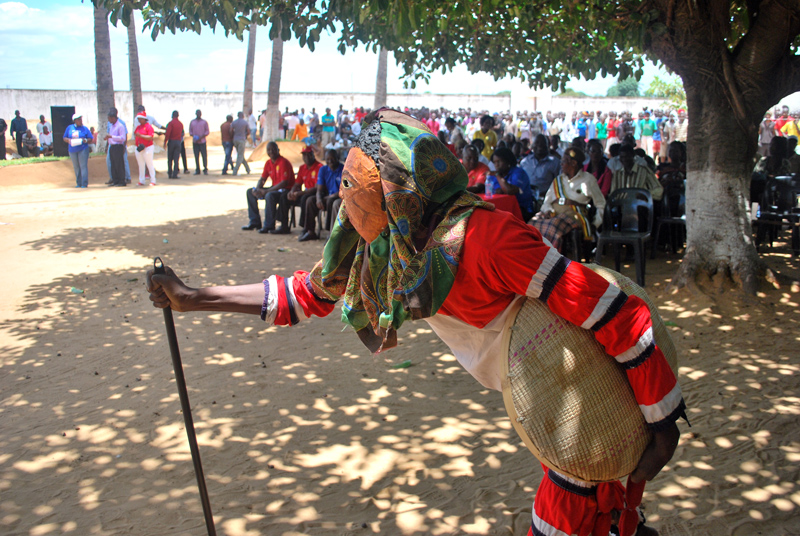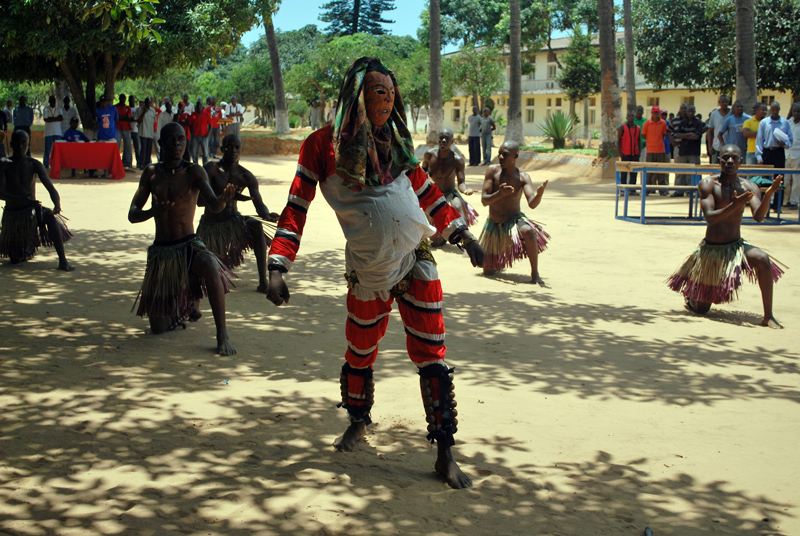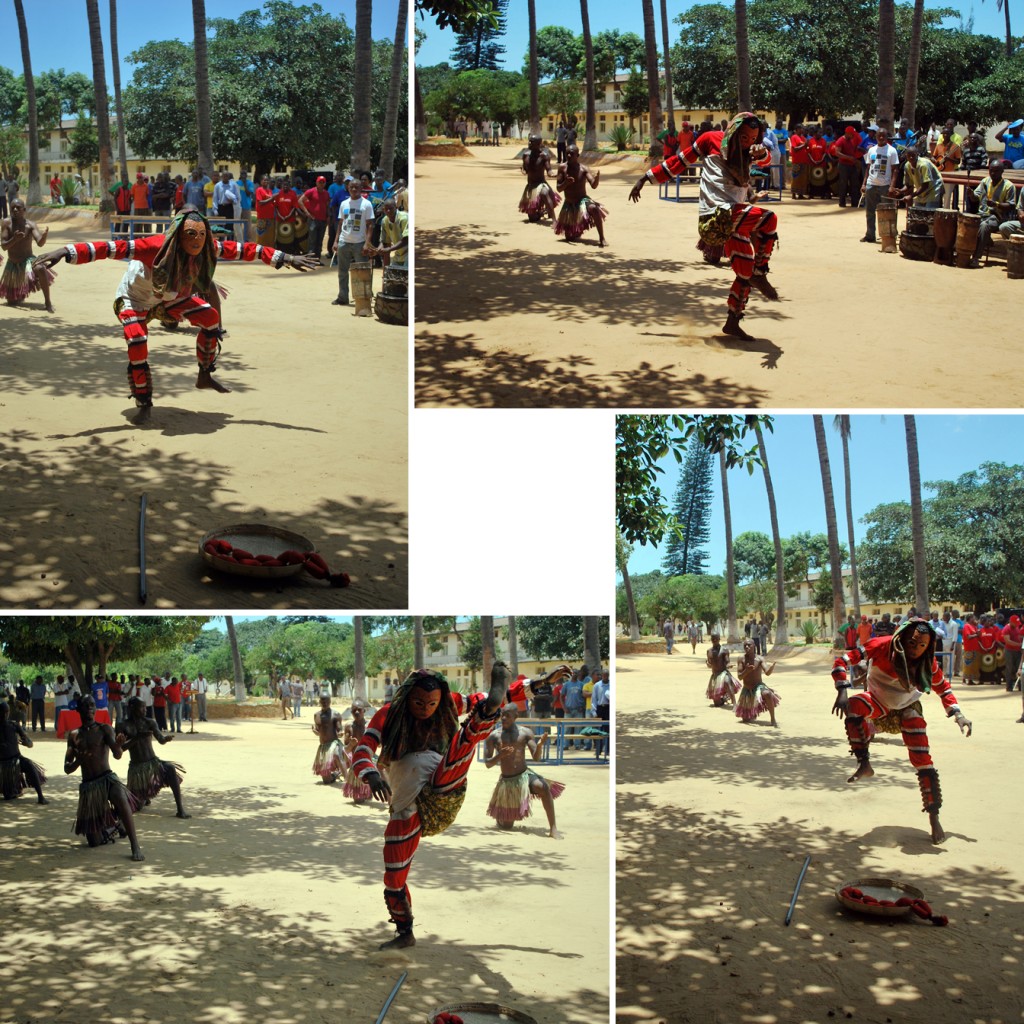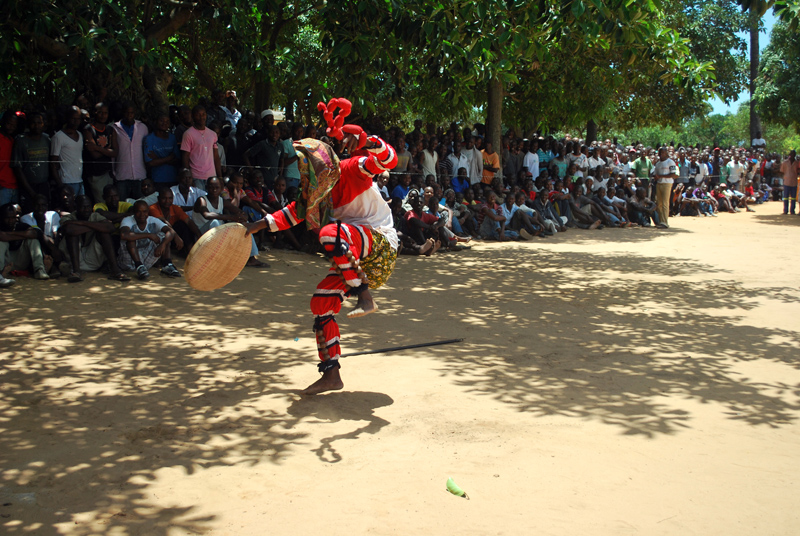Traditional Mozambican Mapiko Dance
Country: Mozambique by Lisette
11-02-2013
Ever since my visit to the Cadeia Central de Maputo (prison), I am anxious to write a blog post about a dance I saw performed by prisoners. Some say this particular dance, called Mapiko Dance, is traditional, others say it is a ritual dance. The origins are not clear even though I’ve been searching online for a little while and asked some people about it.
What is a constant in the explanation is that the dance is always carried out by a man and is about men dominating women. A friendlier version is that the men are protectors of the women. Either way, to me it is a classic example of a culture in which men control the women. As much as I love traditional dances, these kinds of meanings also ensure that old beliefs keep entrenched in modern day life.
Here’s the interesting part of the traditional dance: it originates in the matri-lineal Makonde society. Oh? That’s confusing then, yeah? Turns out (according to some sources) that this dance has grown out of attempts to challenge the power of women. Hmm, is that so wrong? I don’t know because I have no understanding of the Makonde society. What I do know is that women search for ways to find and gain power in patri-lineal societies.
So perhaps it is merely an outcome of a power play that takes place in any society. A more positive take is that it shows people live together and are dependent on one another. No matter who they are, where they live, and what they do for a living. We live in groups and are social ‘animals’. Within these social structures it is important to find ways to co-exist pleasantly. One way is to acknowledge that you’re good in one thing and your partner, family member or friend in something else. This dance’s purpose is to show the women that the men are their protectors.
But let me describe the dance for you. After all, I bet you didn’t expect my musings about society and power relations! The dance starts with the women forming a line on either side, while the mapiko is in the centre. The mapiko dancer wears a mask that is decorated with hair, drawings and dyes and wears clothing made from five pieces of cloth to signify he represents a mythical figure of fear that frightens the women and children in the village.
Other male dancers make threatening gestures and shout words toward the mapiko dancer. As they slowly get closer they suddenly show fear and run away with the mapiko on their heals. As he gets close he turns around and starts to dance frantically. His whole body is shaking.
The dance in prison was slightly different from this account. For starters, there are no women in this male facility, so we only had men dancing in a circle. The mapiko dancer appeared quite sudden and it seemed to me the men were pleading with the dancer. As I don’t speak any of the local language and the people around me were unable to explain the dance, I am certain the meaning could be entirely different from my interpretation of their body moves.
The mapiko then danced alone for a little while. Hereafter he went to the group and the men circled around him. He eventually “broke free” and danced some more before leaving the stage. It was absolutely amazing to see this dancer move! I have never seen anyone dance like this and be gracious at the same time.
All in all, it was a stunning experience, watching the traditional dance in this peculiar setting.










Profile